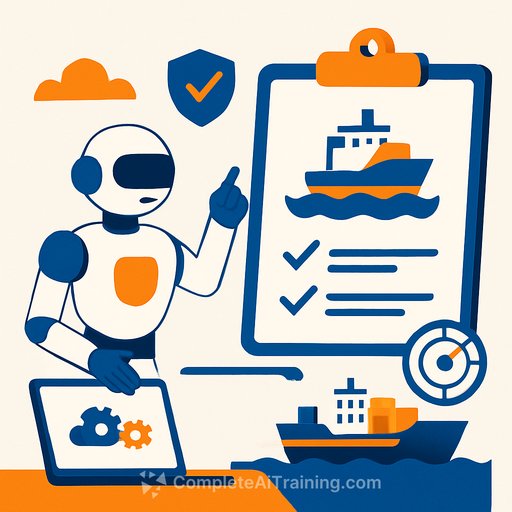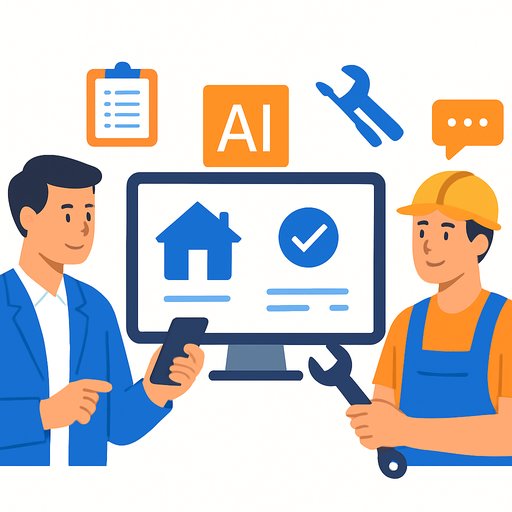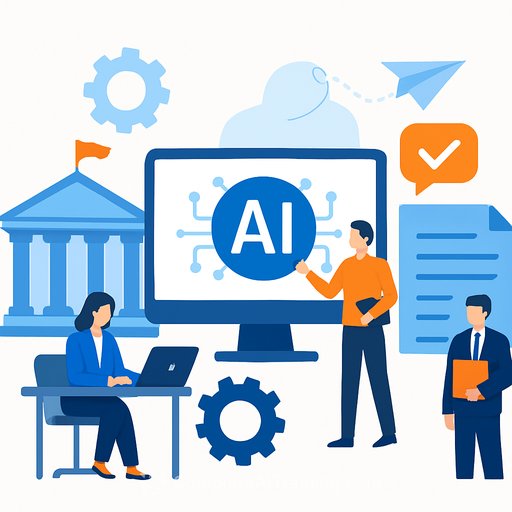From LLMs to AI Agents & Agentic Workflows: How AI Powers Maritime Operations
If you work in maritime operations, you’ve likely noticed AI buzzwords everywhere: Large Language Models (LLMs), AI agents, agentic workflows. Each builds on the last, but what role does each actually play in decisions around maritime risk, trade operations, or regulatory enforcement? For professionals, the goal isn’t to chase every tech trend — it’s to understand how these tools support specific tasks.
Whether screening vessels for sanctions, reviewing cargo paperwork, or compiling intelligence reports, these AI technologies are reshaping workflows. But not all AI fits every job. This article breaks down the differences, where each fits into maritime work, and how to maintain control while letting AI handle the heavy lifting.
LLM: The Foundation of AI Evolution
Large Language Models are the core technology behind recent AI advances. Trained on massive amounts of general text, they interpret prompts, generate content, and surface insights — whether summarizing reports, drafting emails, or explaining legal terms. Everything else, from task-focused agents to full workflows, builds on LLMs.
LLMs handle large text volumes or complex spreadsheets well, but their general-purpose design limits their value in specialized fields like maritime. They often miss subtle points around port rules, vessel behavior, or sanctions. The solution is to layer domain-specific context on top — injecting maritime expertise to turn a general LLM into a vertical AI agent capable of reliable decisions. That’s the stepping stone to agentic workflows.
From Generalization to Context
Moving beyond one-size-fits-all LLMs means focusing on three key elements: quality input data, prompt engineering, and context engineering.
- High-quality data is the base. AI output depends on clean, accurate, validated inputs.
- Prompt engineering crafts instructions so the model’s responses fit your domain and needs.
- Context engineering manages what the AI “remembers” during tasks, enabling it to complete multi-step processes.
While prompt and context engineering help with LLMs, they become essential for vertical AI agents that handle complex maritime tasks.
What’s an AI Agent and When Do You Need One?
Vertical AI agents build on LLMs but specialize in maritime. They combine the LLM’s general language skills with context engineering — adding background, rules, and domain knowledge — so they can:
- Understand maritime-specific terms, regulations, and data sources
- Follow multi-step workflows without losing track
- Update outputs as new data arrives
In practice, maritime AI agents can:
- Automate vessel screening across documents and watchlists
- Monitor fleet behavior for compliance in near real-time
- Create daily briefings highlighting key insights
- Pre-fill risk reports using structured and historical data
Think of these agents as tireless teammates who cut through noise and free you to focus on critical decisions — without replacing your expertise.
What Are Agentic Workflows and How Do They Transform Maritime Operations?
Agentic workflows link multiple vertical AI agents, each handling a defined role with its own memory and context. This setup automates complex processes over time, not just one-off tasks.
For example, in maritime operations, one agent might pull vessel ownership data, another cross-check sanctions lists, a third compiles risk summaries, and a fourth prepares reports. Each passes relevant info to the next, moving the workflow forward efficiently.
Agentic workflows offer key benefits:
- Orchestration: A coordinated flow matches your real operations instead of isolated AI outputs.
- Focus and consistency: Each agent’s job, input, and output are clearly defined, reducing errors.
- Scalability: Once set up, workflows run across fleets, trades, or ports without adding staff.
This approach builds an AI-powered operations center where every step supports the next, and outputs are ready for human judgment. Clear validation points keep decision-making in your hands while accelerating processes.
Why This Matters for Maritime Leaders
Maritime operations face growing challenges: shifting trade routes, new sanctions, and demands for faster decisions. Using AI isn’t about jumping on trends — it’s about applying the right tools to speed up decisions while keeping control.
Match the AI layer to the task:
- LLMs help cut through complexity, summarize advisories, draft emails, and review legal text.
- Vertical AI agents automate structured tasks like vessel behavior checks, screening, and surfacing timely insights.
- Agentic workflows scale these tasks across fleets or teams, helping organizations move faster and stay focused.
How AI Supports Maritime Operations Today
By combining LLMs with real-time maritime data and structured logic, AI solutions can reflect how maritime professionals actually work. Vertical AI agents surface risk insights and analyze vessel behavior while keeping context across steps. Agentic workflows then connect these agents to scan documents, track fleets, monitor risks, and prepare reports. This reduces manual work and helps teams focus on what matters.
From Understanding to Action: The AI Path Forward
Every smart decision starts with clear information and scales with the right tools. LLMs speed up handling complex info. Vertical AI agents manage repeatable tasks and highlight what’s important. Agentic workflows stitch these capabilities into complete operational processes, freeing maritime professionals to focus on strategy and oversight.
The goal isn’t replacing human judgment with AI — it’s using AI that fits your mission. The right setup empowers decision-makers to act faster and smarter, scaling what works.
For maritime operations professionals looking to deepen AI skills and apply them effectively, exploring training resources can be valuable. Check out Complete AI Training’s courses by job role for practical guidance tailored to operations roles.
Your membership also unlocks:






